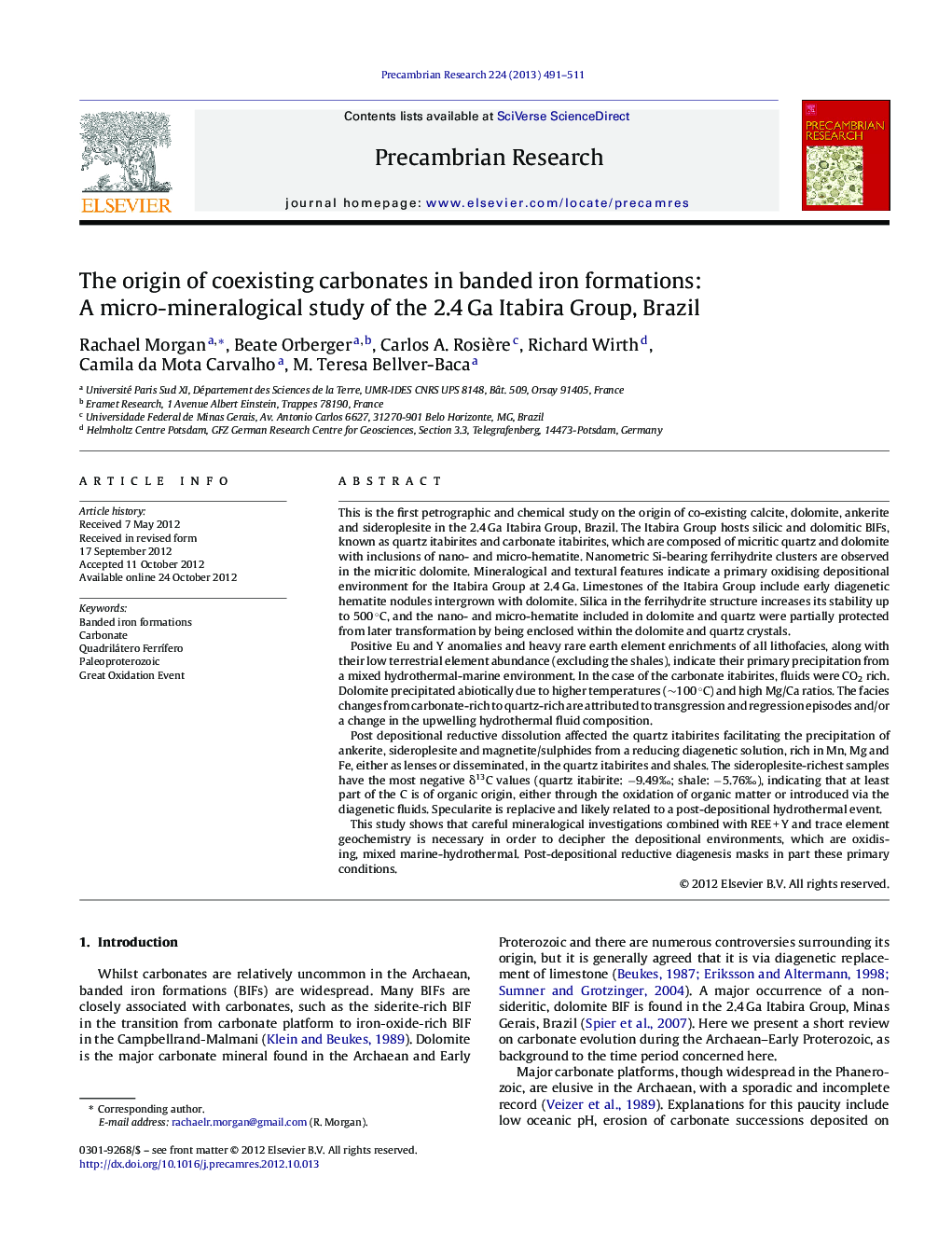| کد مقاله | کد نشریه | سال انتشار | مقاله انگلیسی | نسخه تمام متن |
|---|---|---|---|---|
| 4723359 | 1639650 | 2013 | 21 صفحه PDF | دانلود رایگان |

This is the first petrographic and chemical study on the origin of co-existing calcite, dolomite, ankerite and sideroplesite in the 2.4 Ga Itabira Group, Brazil. The Itabira Group hosts silicic and dolomitic BIFs, known as quartz itabirites and carbonate itabirites, which are composed of micritic quartz and dolomite with inclusions of nano- and micro-hematite. Nanometric Si-bearing ferrihydrite clusters are observed in the micritic dolomite. Mineralogical and textural features indicate a primary oxidising depositional environment for the Itabira Group at 2.4 Ga. Limestones of the Itabira Group include early diagenetic hematite nodules intergrown with dolomite. Silica in the ferrihydrite structure increases its stability up to 500 °C, and the nano- and micro-hematite included in dolomite and quartz were partially protected from later transformation by being enclosed within the dolomite and quartz crystals.Positive Eu and Y anomalies and heavy rare earth element enrichments of all lithofacies, along with their low terrestrial element abundance (excluding the shales), indicate their primary precipitation from a mixed hydrothermal-marine environment. In the case of the carbonate itabirites, fluids were CO2 rich. Dolomite precipitated abiotically due to higher temperatures (∼100 °C) and high Mg/Ca ratios. The facies changes from carbonate-rich to quartz-rich are attributed to transgression and regression episodes and/or a change in the upwelling hydrothermal fluid composition.Post depositional reductive dissolution affected the quartz itabirites facilitating the precipitation of ankerite, sideroplesite and magnetite/sulphides from a reducing diagenetic solution, rich in Mn, Mg and Fe, either as lenses or disseminated, in the quartz itabirites and shales. The sideroplesite-richest samples have the most negative δ13C values (quartz itabirite: −9.49‰; shale: −5.76‰), indicating that at least part of the C is of organic origin, either through the oxidation of organic matter or introduced via the diagenetic fluids. Specularite is replacive and likely related to a post-depositional hydrothermal event.This study shows that careful mineralogical investigations combined with REE + Y and trace element geochemistry is necessary in order to decipher the depositional environments, which are oxidising, mixed marine-hydrothermal. Post-depositional reductive diagenesis masks in part these primary conditions.
► We studied coexisting carbonate and iron oxides from BIFs at 2.4 Ga.
► We established a primary oxidising and mixed marine-hydrothermal environment.
► Precipitation of primary dolomite and ferrihydrite was coeval in CO2-rich fluids.
► Alternations between silica and carbonate-rich BIF deposition.
► Diagentic carbonates at least partially derived from degraded organic matter.
Journal: Precambrian Research - Volume 224, January 2013, Pages 491–511